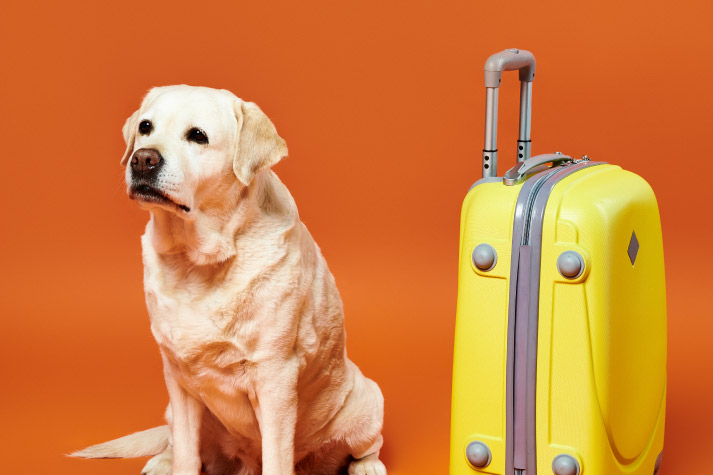


12 Nov
Large dogs are loyal, loving, and wonderful companions. The ‘gentle giant’ is among the most wonderful of pets to have, but traveling with them does take some planning. Whether you're flying or driving, it’s essential to think ahead to ensure your dog’s comfort and safety. Here’s an overview of your options and tips for making travelling with a larger dog as smooth as possible.
Most airlines allow only small pets in the cabin, so large dogs need to travel in the cargo hold. Major airlines take specific steps to ensure that the cargo area is pressurized and temperature-controlled, creating a safe space for your pet and ensuring the cargo hold has the same conditions as the cabin.
Flying your large dog in cargo can feel stressful, but with proper preparation and a durable travel crate, it’s a reliable choice. Look up and research the airline’s pet policies well in advance to make sure you’re fully prepared for travel and avoid any last-minute surprises.
Driving is a great option for large dogs, especially for snub-nosed breeds, older pets, or those needing regular medications. Driving also gives you the freedom to stop whenever needed, letting your dog have breaks for stretching, eating, or bathroom stops. Although it takes longer than flying, ground travel is often less stressful for large dogs.
Benefits of Ground Travel:
If neither flying nor driving is feasible, a professional pet transport service may be the answer. These companies specialize in safe, long-distance pet travel by air or road, taking the stress out of your hands and making sure your pet has a smooth and safe journey. Pet transport services manage everything from airport transfers to door-to-door delivery. Using a trusted pet transportation service ensures that your dog will receive the attention and care they need while traveling.
Regardless of your travel method, a strong crate is essential for your dog’s safety. For air travel, your crate must meet airline standards. The International Air Transport Association (IATA) provides specific guidelines, so make sure to check them well in advance.
Your crate should meet the following criteria:
Before traveling, tire your dog out with a long walk or play session to help them relax during the journey. Feed your dog about four hours before you depart and allow plenty of time for bathroom breaks.
Ground Travel Tips:
Air Travel Tips:
Traveling with a large dog requires extra effort, but with careful planning, it can be a calm and enjoyable experience. By considering your options—whether flying, driving, or using a transport service—and following these tips, you’ll help ensure a safe, comfortable journey for both you and your furry companion.

AUTHOR’S BIO
ARSH BHARDWAJ
I am passionate about language, storytelling and the human urge to connect Having paid close attention to marketing and branding as a craft for some time, I'm eager as ever to indulge my passion for prose.